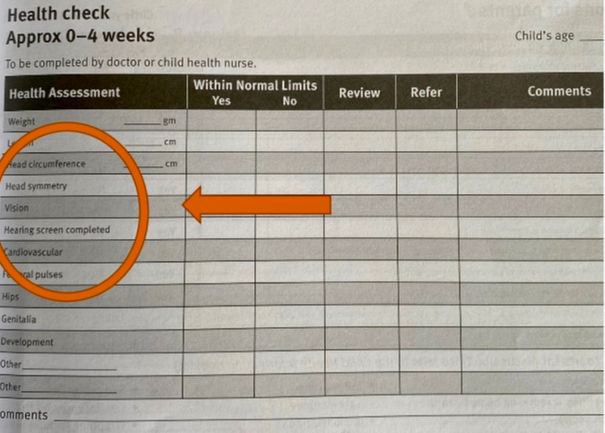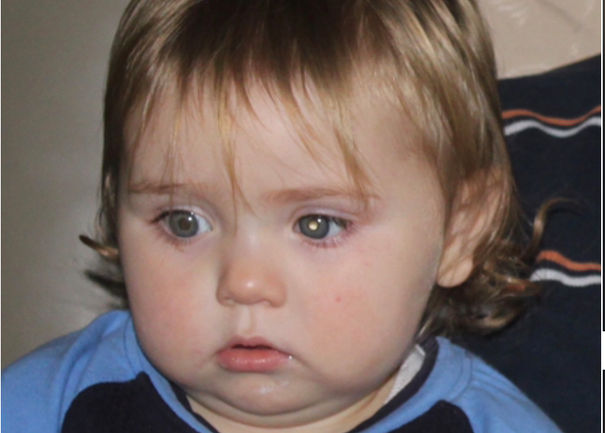Queensland
What is Retinoblastoma?
Retinoblastoma is a type of eye cancer that can occur in one or both eyes. The cancer starts in the retina, the light detecting tissue at the back of the eye.
Retinoblastoma can occur in one eye (unilateral retinoblastoma) or both eyes (Bilateral retinoblastoma).
Most cases (two thirds) usually involve one eye, and the rest (one third) affect both eyes.
Retinoblastoma mostly affects young children under the age of 5, but can happen later.
Most children who have cancers in both eyes or multiple tumours in one eye at the time of diagnosis may have an underlying genetic cause for the cancer.
Signs and Symptoms
What to do if you notice any.
The condition is commonly detected by an unusual glow of the pupil, which often reflects light like a cat’s eye. Children with eye tumours may also have a turned or crossed eye, squint, pain or redness around the eye, or poor vision.
The main signs and symptoms include:


Glow of the pupil
an eye that appears white or ‘glowing’ when a light is shone into it (such as the flash of a camera in a photograph)

Lazy or cross-eyed
eyes that seem to be looking in different directions (also called a ‘turned’, ‘lazy’ or ‘crossed’ eye)
a red or painful eye

Eye larger than usual
an eye that is larger than usual

Cloudiness of the pupil
cloudiness in the coloured part of the eye and the pupil.
All Videos
All Videos


RETINOBLASTOMA AWARENESS WEEK!
Eye cancer in young children is rare
Eye cancer in young children is rare and can be treated easily if found early!
The six signs you should look out for are:
1. A white reflection in the pupil
2. A squint, where one eye looks in or out
3. A red, sore or swollen eye without infection
4. A change in colour of the iris
5. An absence of red eye in one pupil
6. A deterioration in the child's sight.

Early diagnosis
Early diagnosis is the best way to ensure treatment can be delivered as quickly as possible to stop the illness progressing.
If you are concerned your child could have retinoblastoma, urgently seek medical attention via your ophthalmologist, emergency department, local GP, paediatrician or optometrist.
There are 20 or so diseases common to the glow, and it may not be retinoblastoma, but early detection and early treatment is the key and may offer the best chance to preserve a child’s sight.
Early Diagnosis
Get your children's eyes checked
Look out for symptoms

How is Retinoblastoma diagnosed?
Retinoblastoma can be diagnosed and staged through the combination of
Medical history
The doctor will ask questions about what you have noticed in the eye and how long it has been there.
Visual acuity
The doctor will check what the eyesight is, and how well the eyes are aligned.
Examination under anaesthetic
This is the examination of the eye, whilst under general anaesthetic to enable the doctors to see all the retina and examine all of the eye.
Blood tests
Blood tests can be done under anaesthetic to keep the child more comfortable.
Medical imaging
These are extra tests that might be needed to help diagnose retinoblastoma and check that it hasn't spread. These include ultrasound and MRI.
Lumbar Puncture
A Lumbar puncture is a test that is done under anaesthetic to take a small sample of the fluid around the spine. Similar to an epidural during labour, it helps check whether retinoblastoma has spread.
Where to go for parents to reach out if they need support?
We have a “Know the Glow” Bridge to Brisbane team that Drs, nurses, allied health professionals, patients, their families and friends participate in and we welcome you to join us!
This is to be used as a guideline only and is for support, if you have any concerns regarding your child's health please discuss with your child’s doctor or a healthcare professional.
Treatments of Retinoblastoma
Treatments of retinoblastoma are individualised for each patient depending on the age of your child, location, and the size and stage of the cancer.
Chemotherapy
Chemotherapy or chemo is the use of anti-cancer drugs to treat cancer. Chemotherapy can be given in different ways to treat Retinoblastoma.
Laser therapy
Lasers are highly focused beams of light. Different types of laser therapy can be used to treat small retinoblastoma tumours.
Cryotherapy
Cryotherapy uses a small metal probe that is cooled to very low temperatures, killing the retinoblastoma cells by freezing them.
Radiation
This treatment uses high energy x-rays or particles to kill cancer cells.
Surgery
Enucleation (The operation to remove the whole eye and part of the optic nerve) may be needed in severe cases.
Resources for :
Prosthetic Eyes
Vision Impaired Children
Patient Travel
Eye Care Accessories
References
-
A Parents Guide to Understanding Retinoblastoma Iris Medical
.jpg)



















.jpg)